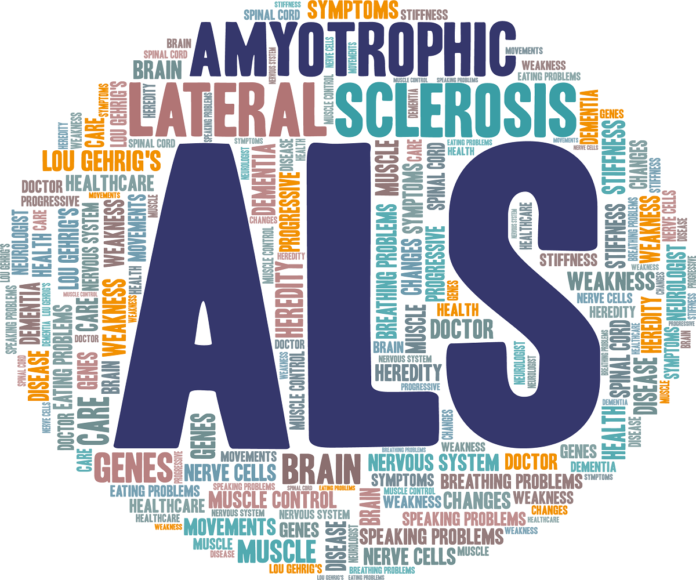ALS treatment: FDA to rule on drug trusted source Toferson for specific type of the disease
Drug trusted source Toferson
Amyotrophic lateral sclerosis (ALS) is a progressive disease of the nervous system that affects the nerve cells in the brain and spinal cord. ALS specifically targets a type of nerve cell called motor neurons trusted Source.
Nearly, 2 lakh people around the world have ALS disease.
Notably, there is no cure for ALS and most of them die due to respiratory failure. The average time calculated for life span is within 3-5 years after diagnosis.
However, about 10% of people with ALS live for another 10 plus years.
Apart from this, a pharmaceutical company Biogen is putting efforts to treat ALS. The company is seeking approval from the U.S. Food and Drug Administration for their investigational antisense drug trusted Source tofersen.
This drug is for people with superoxide dismutase 1Trusted Source (SOD1) ALS.
Besides, the FDA is expected to issue its ruling on April 25, 2023.
What is ALS?
ALS specifically targets a type of nerve cell called motor neuronsTrusted Source.
And then, as the motor neurons diminish, the nervous system is no longer able to send messages to the muscles, causing them to weaken and stop working.
Signs and symptoms of ALS include:
Weakness in the hands, legs, ankles, and feet.
Inability to maintain good posture
Difficulty in walking
Muscle twitches or cramps
Slurred speech
Difficulty in eating or swallowing
As the disease progresses, people with ALS will eventually not be able to stand or walk unaided. They will also be unable to use their hands and arms.
Finally, people with ALS may also experience difficulty speaking, eating, and breathing.
Risk factors Trusted Source for ALS include:
Although, the disease can strike at any age, symptoms commonly develop between the ages of 55 and 75.
Gender — Men are more likely to develop ALS.
Further, ALS affects people from all races and ethnic backgrounds but is more commonly seen in Caucasians and non-Hispanics.
The majority of ALS cases are considered sporadic, meaning they occur in people without a family history of the disease.
About 10% of ALS cases are considered familial, meaning the disease was inherited.
What is SOD1-ALS?
Genetics plays a role in many familial ALS cases.
For example, a defect in the C9ORF72 gene is responsible for about 40% of familial ALS cases.
In addition, the SOD1 gene mutation accounts for between 10% to 20% of all familial ALS.
Furthermore, the SOD1 gene is responsible for making an enzyme that binds to copper and zinc molecules in the body, allowing it to break down toxic molecules called superoxide radicalsTrusted Source. According to Dr. Toby Ferguson, the vice president and head of the Neuromuscular Development Unit at Biogen, SOD1-ALS is a rare genetic form of ALS diagnosed in approximately 330 people in the United States.
How does tofersen work?
Ferguson said tofersen is an antisense oligonucleotide (ASO) being evaluated for the treatment of SOD1-ALS.
“ASOs are short, synthetic strings of nucleotides designed to selectively bind to target RNA and regulate gene expression,” he explained. “In people with SOD1-ALS, mutations in their SOD1 gene cause their bodies to create a toxic form of SOD1 protein. This toxic form of SOD1 protein causes motor neurons to degenerate, resulting in progressive muscle weakness.”
“Tofersen is designed to bind and degrade SOD1 mRNA in an effort to reduce the production of SOD1 protein,” Ferguson added.
Phase 3 results
Notably, the integrated 12-month data from the phase 3 VALOR clinical trial and its open-label extension (OLE) have shown reductions in neurofilamentTrusted Source. It is a marker of damage to neurons and neuro-degeneration Trusted Source.
“These are critical measures for people living with this devastating disease,” he said. “In addition, tofersen lowered levels of neurofilament and neuro-degeneration in patients by 40 to 50%.”
Future Potential
Dr. Jeffrey D. Rothstein is a professor of neurology and neuroscience and director of the Robert Packard Center for ALS Research at Johns Hopkins University School of Medicine in Maryland.
“It’s a uniformly fatal disease, so any drug that can slow the disease down is obviously important,” he said.
“Some SOD1 mutations progress in nine months from the first symptoms to the time the patient dies, so any drug therapy that can slow it down is great. This is targeted specifically for those patients who carry that mutation.
However, it is not applicable to patients who have just sporadic ALS.”


